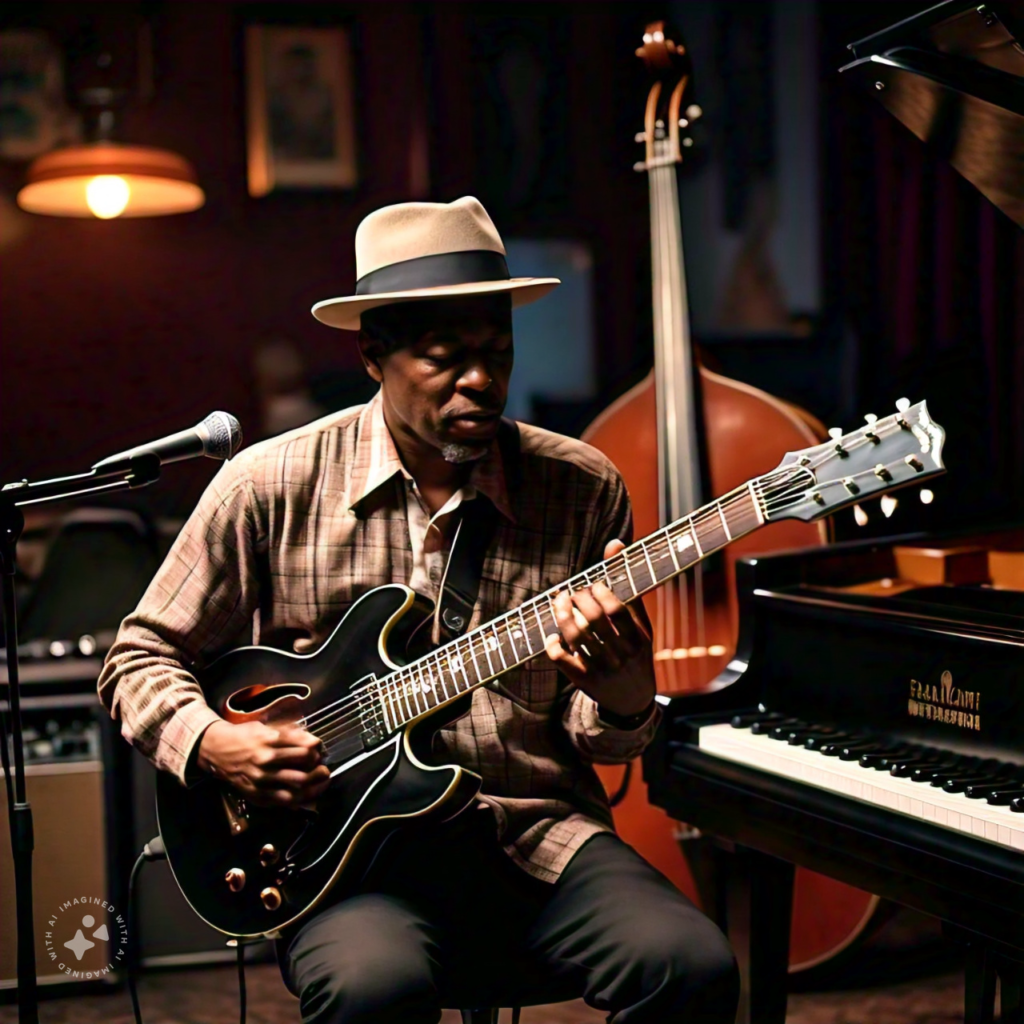Awesome Blues Guitar Basics
Learning to play electric blues guitar is a journey that combines technique, emotion, and a deep understanding of musical history. This genre, which has its roots in African American traditions, offers a rich tapestry of sounds and styles, from the raw, emotional wail of the Delta blues to the more sophisticated, amplified tones of the Chicago blues. Here’s a comprehensive guide to help you start your journey into the world of electric blues guitar.
The Essence of Blues Guitar
The essence of blues guitar lies in its ability to convey emotion through simple, yet powerful musical expressions. The blues scale, characterized by its flatted third and seventh notes, is the foundation of this genre. It is through the manipulation of these notes that blues guitarists express sorrow, joy, longing, and hope.
One of the first steps in learning to play electric blues guitar is familiarizing yourself with the blues scale. The most common blues scale is the minor pentatonic scale, with the addition of the “blue note,” which is the diminished fifth (or sharp fourth). Practicing this scale in different positions on the neck will provide you with the fundamental vocabulary of blues soloing.
Iconic Blues Guitar Techniques
Blues guitar is as much about technique as it is about notes. Here are some essential techniques that every aspiring blues guitarist should master:
- Bending: This technique involves pushing the string up or down to reach a higher pitch. Bending notes can add a vocal quality to your playing, imitating the human voice’s nuances.
- Vibrato: A controlled oscillation of the pitch, vibrato adds emotion and sustain to your notes. The key to good vibrato is control and consistency, which can be developed through regular practice.
- Slide Guitar: Using a slide, typically made of glass, metal, or ceramic, you can glide smoothly between notes, creating a distinctive, haunting sound. Slide guitar is a staple in blues, particularly in the Delta blues tradition.
- Fingerpicking: Many blues guitarists use fingerpicking techniques to create complex, syncopated rhythms. This involves plucking the strings with your fingers instead of a pick, allowing for greater control and a richer sound.
Learning from the Masters
To truly understand electric blues guitar, it’s essential to study the masters of the genre. Here are a few legendary blues guitarists whose styles you should explore:
- B.B. King: Known as the “King of the Blues,” B.B. King’s expressive vibrato and lyrical phrasing are fundamental to modern blues guitar. His song “The Thrill Is Gone” is a masterclass in emotional expression through guitar.
- Albert King: Another blues titan, Albert King was famous for his powerful string bends and use of a Gibson Flying V guitar. His playing on songs like “Born Under a Bad Sign” has influenced countless guitarists.
- Muddy Waters: Often called the “Father of Modern Chicago Blues,” Muddy Waters pioneered the electric blues sound. His raw, gritty playing and commanding stage presence set the standard for electric blues guitar.
- Stevie Ray Vaughan: A more recent legend, Vaughan revitalized the blues in the 1980s with his fiery playing and soulful interpretations. His album “Texas Flood” remains a benchmark for electric blues guitar.
Developing Your Style
While it’s crucial to learn from the greats, developing your unique style is the ultimate goal. Here are some tips to help you on this path:
- Experiment with Tone: The electric blues guitar offers a wide palette of tones, from clean and warm to gritty and overdriven. Experiment with different settings on your amplifier and pedals to find your signature sound.
- Improvise: Blues guitar is known for its improvisational nature. Practice jamming over backing tracks in various keys and tempos. This will help you develop your ability to think on your feet and express yourself spontaneously.
- Listen Actively: Spend time listening to a wide range of blues recordings. Pay attention to how different guitarists phrase their solos, use dynamics, and interact with the rhythm section. Active listening will deepen your understanding of the genre and inspire your playing.
- Play with Others: Blues is a communal music form. Playing with other musicians will improve your timing, listening skills, and ability to adapt to different musical contexts. Join a local blues jam session or start a band to gain valuable experience.
Essential Gear for Blues Guitar
While great blues playing comes from the fingers, having the right gear can enhance your sound. Here are some recommendations:
- Guitar: A solid-body electric guitar like the Fender Stratocaster or Gibson Les Paul is a popular choice among blues guitarists. Semi-hollow body guitars like the Gibson ES-335 are also favored for their warm, resonant tone.
- Amplifier: A tube amplifier is often preferred for its warm, organic overdrive. Classic models like the Fender Twin Reverb or Marshall Bluesbreaker are iconic in the blues world.
- Pedals: Overdrive and distortion pedals are essential for achieving a bluesy tone. Additionally, consider adding a delay or reverb pedal to add depth and space to your sound.
Conclusion
Learning to play electric blues guitar is a rewarding endeavor that combines technical skill, emotional expression, and a deep connection to musical history. By mastering the blues scale, essential techniques, and studying the greats, you’ll develop a solid foundation. As you continue to explore and experiment, you’ll find your unique voice within this timeless genre. Whether you’re playing alone in your room or on stage in front of an audience, the blues guitar offers endless opportunities for expression and creativity. To learn more, book your free first lesson at Los Feliz Guitar Lessons today.

